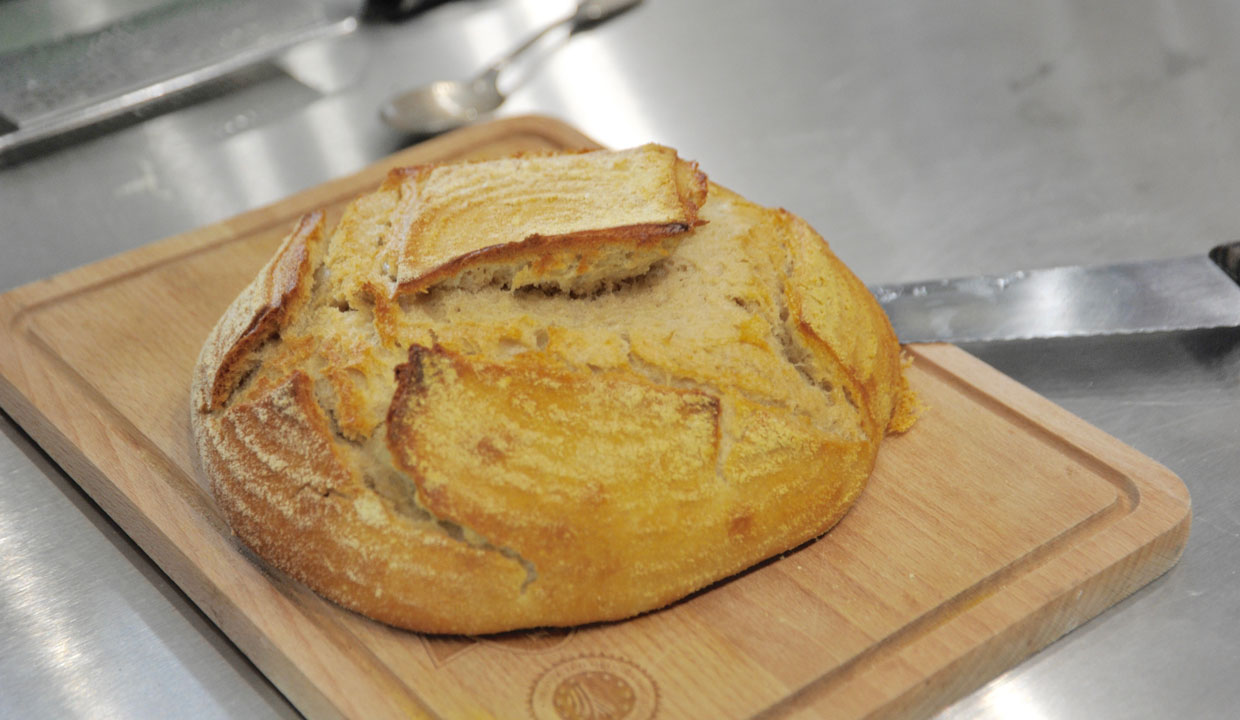This is not a true sour dough as we do not have the time but it does contain some sour “leaven” which is the fermentation culture made ready for bread making. This will give extra depth to the dough, and heighten the flavour considerably, as well as helping to moisten the end result.
Starter
To make sour dough there are three distinct requirements. Firstly you need a starter, this is then fed regularly to keep the wild yeasts inside it alive. A starter can be made simply by mixing flour and water in even quantities and leaving it in a tub at room temperature to begin to ferment as the local wild yeasts start to take effect. Alternatively you can acquire an active starter from someone else who already has some.
Ferment or Leven
The ferment or leaven stage is the preparatory step to making bread. Basically it is a 50/50 mixture of water and flour with some added starter – the starter seeds the fermentation into the new mixture and because of all the available food for the yeasts it ferments rapidly.
Dough
The dough phase is achieved by adding enough flour, salt and water to the highly active leaven to get a nice wet dough to form. This is then kneaded in the usual way, by hand or by machine to make a dough. This is then proved, shaped, proved again and finally baked.
Kit – Mixing bowl, dough scraper, scales, proving tray and blade.
Ingredients
- 250g leaven
- 500g strong flour
- 250g water
- 12g salt
Method
Make the dough and allow it to rise – this could take 3 or 4 hours or longer depending on temperature and how active your leaven is.
Know it back and shape into a loaf shape or two smaller ones, placing it in a proving basket to support its shape whilst it rises again.
Once fully proved – very delicate and aerated, at least doubled in size – bake in a very hot oven with the ESSE oven steam vent closed for around 28 minutes. Oven temperature around 200 degrees c (ESSE cooker dial guide to be at the low end of HOT).
Tim Maddam’s Top Sourdough Tips
- Invest the time – it takes between eight and 12 hours to make a good sourdough from scratch. Proving takes four times as long as for a yeast-risen dough
- Feed your starter or ‘leaven’ regularly – especially if it’s been in the fridge for a while. This is the best way to adjust the sourness to your individual taste
- The wetter the better – a wet dough mix may be harder to handle, but it will make a better loaf
- Watch the dough – not the clock. The dough will tell you when it’s ready to bake – it’s just a matter of practice
- Don’t scrimp on the salt – otherwise your bread will taste bland
- Respect the dough – handle it gently – take care not to knock the air out of it
- Use semolina to minimise sticky ‘dough fingers’ without drying out the mixture
- Make sure the oven is up to temperature well before the bread goes in – between 180˚C and 200˚C (aim for the ESSE cooker dial guide to be at the low end of HOT) – depending on the finish you want
- Introduce steam to your oven. Close the ESSE oven steam vent.


